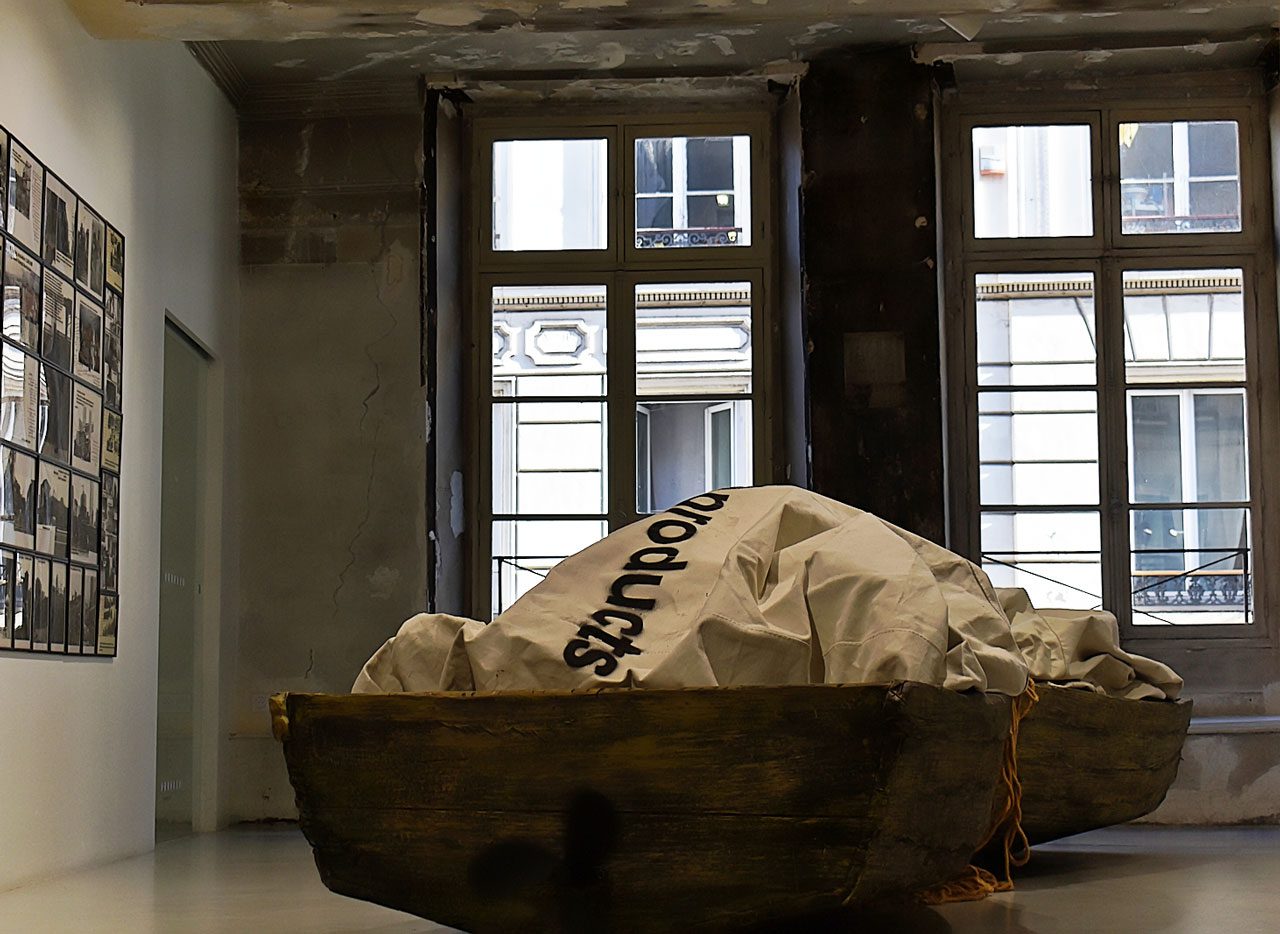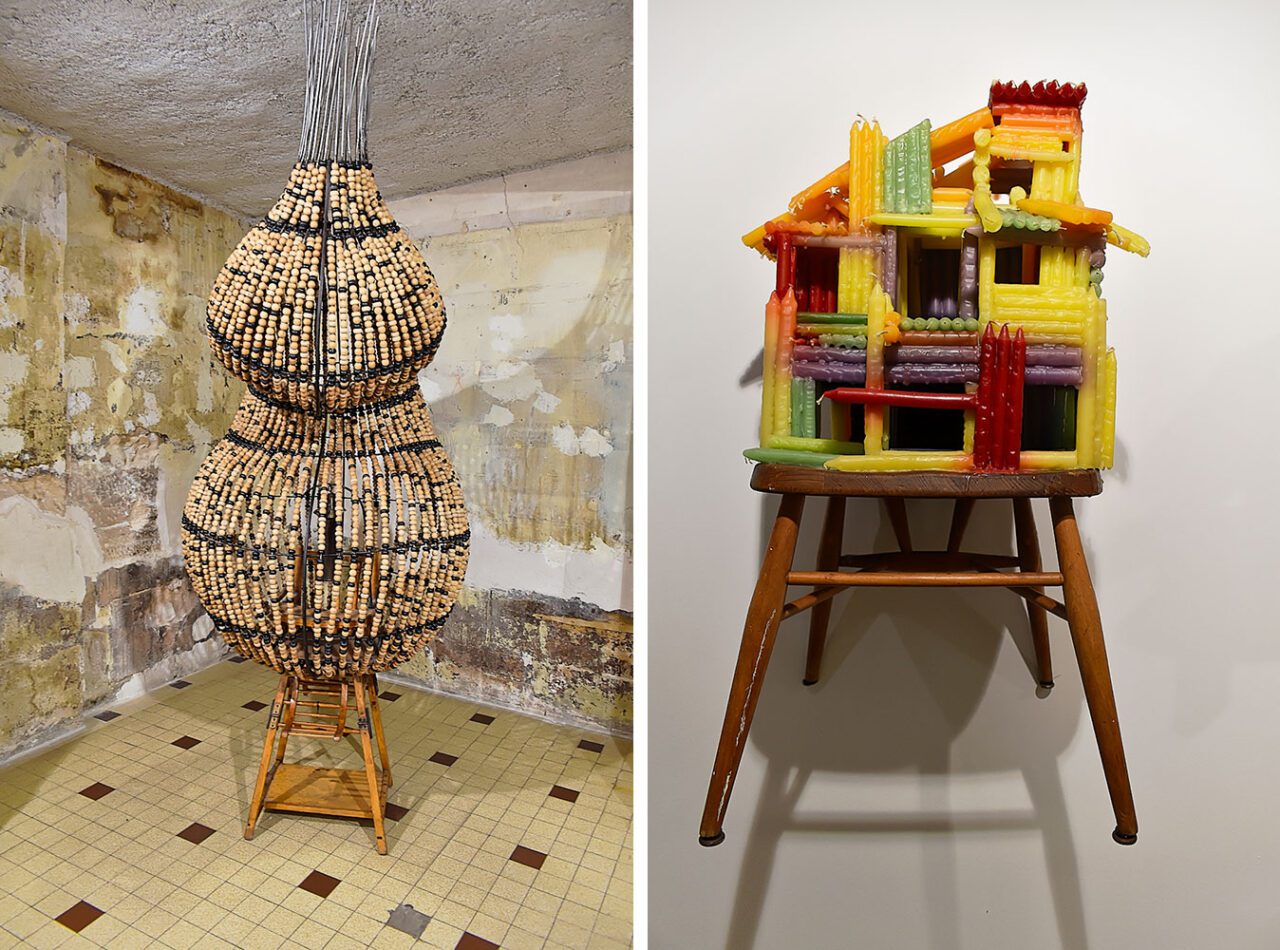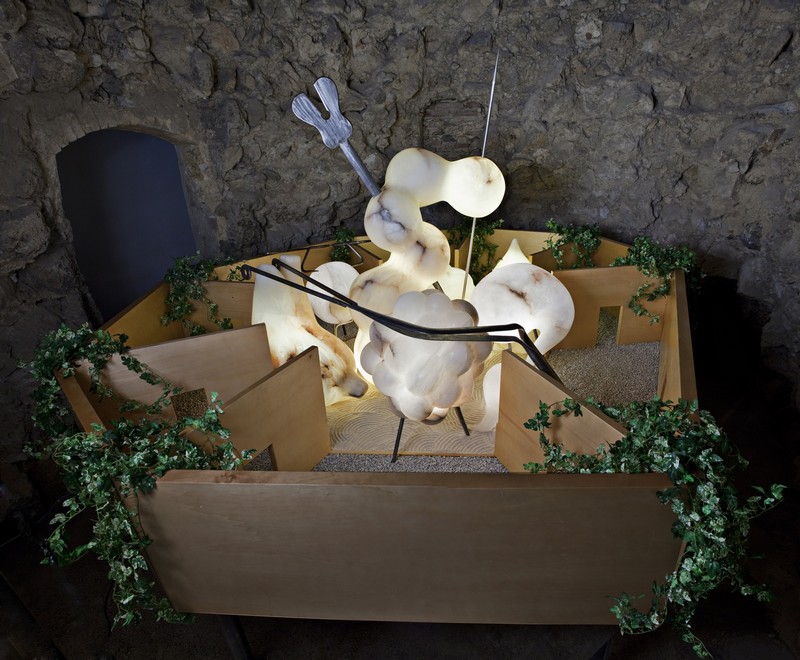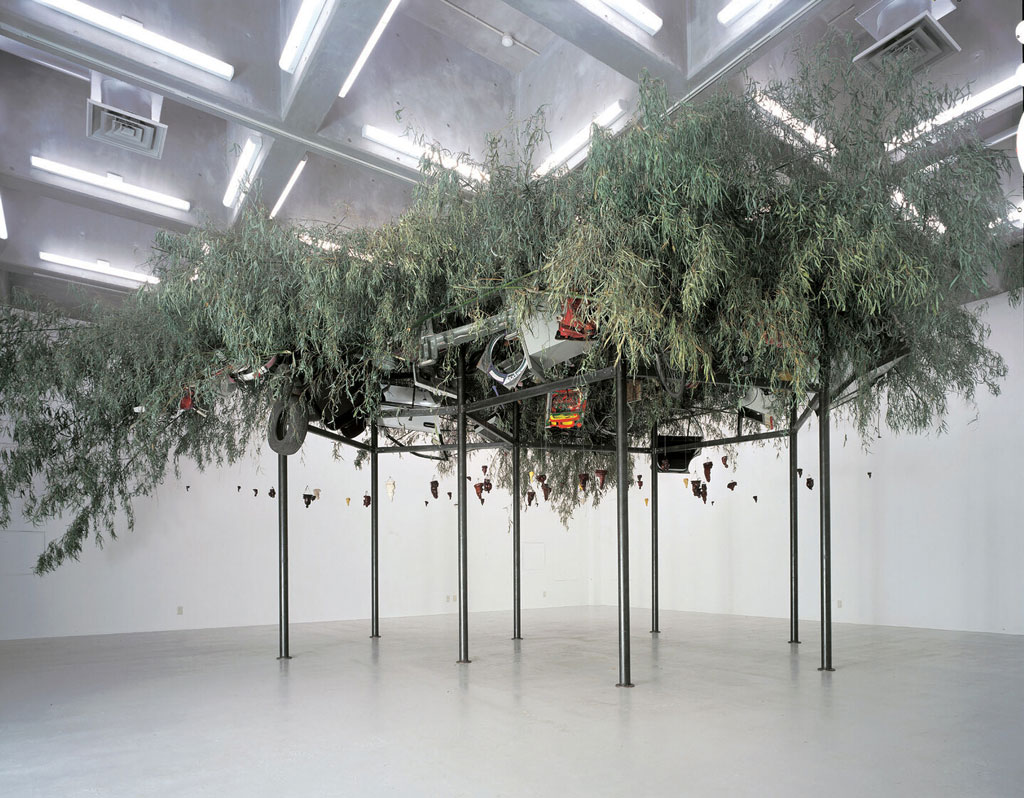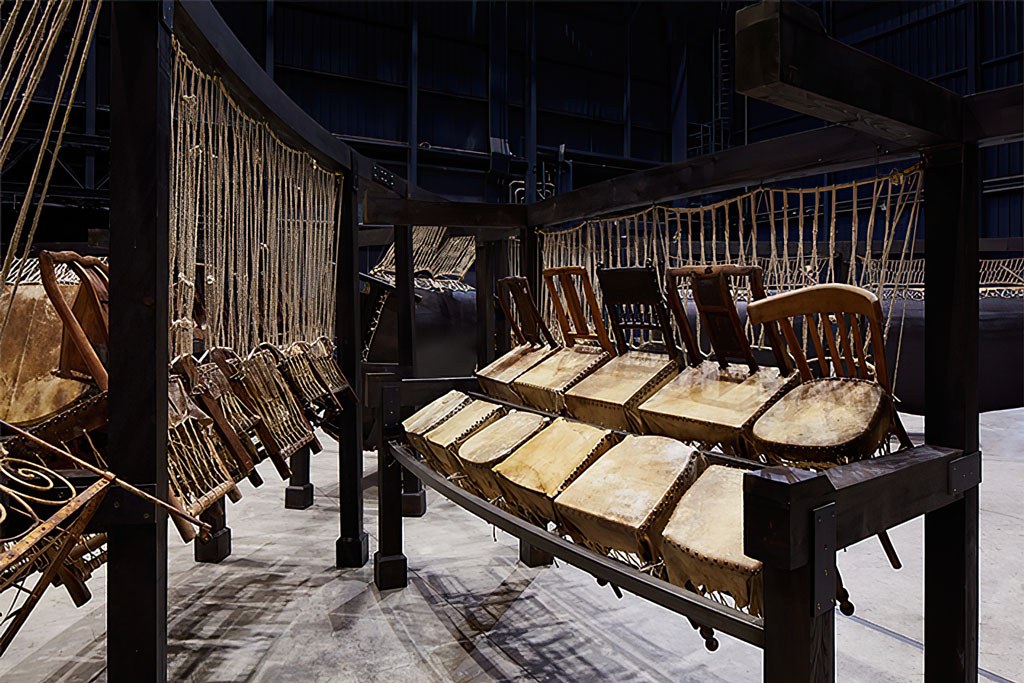TRACES: Chen Zhen
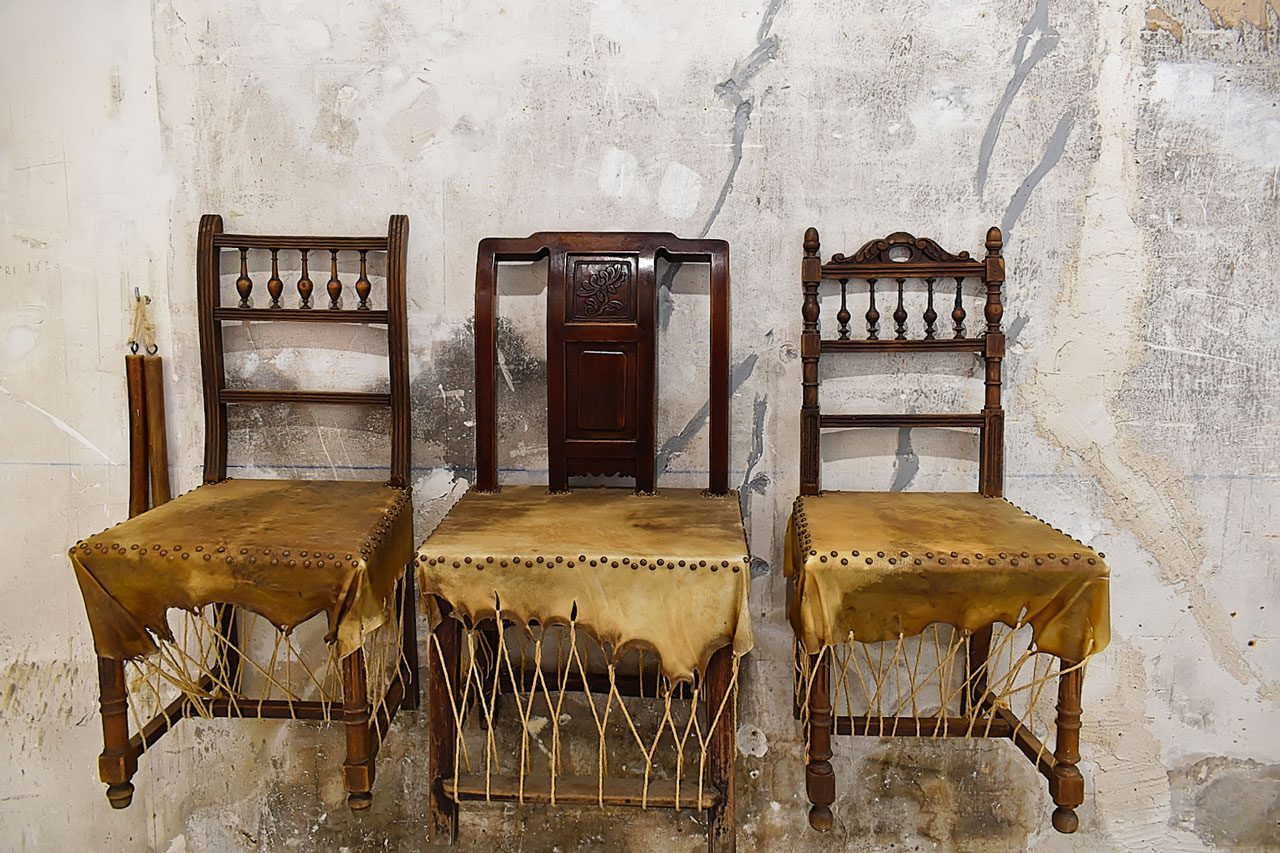 Today is the occasion to bear in mind, one of the most important Chinese artists, Chen Zhen (4/10/1955-13/12/2000). His conceptual installations and sculptures retain a kind of optimism rooted in the humanistic spirit of ‘80s China, in which the artist maintains a role as social and political commentator. This column is a tribute to artists, living or dead, who have left their mark in Contemporary Art. Through documents or interviews, starting with: moments and memories, we reveal out from the past-unknown sides of big personalities, who left their indelible traces in time and history…
Today is the occasion to bear in mind, one of the most important Chinese artists, Chen Zhen (4/10/1955-13/12/2000). His conceptual installations and sculptures retain a kind of optimism rooted in the humanistic spirit of ‘80s China, in which the artist maintains a role as social and political commentator. This column is a tribute to artists, living or dead, who have left their mark in Contemporary Art. Through documents or interviews, starting with: moments and memories, we reveal out from the past-unknown sides of big personalities, who left their indelible traces in time and history…
By Efi Michalarou
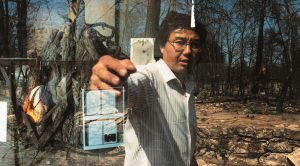 Chen Zhen was born in 1955 in Shanghai. He studied at Shanghai Fine Arts and Crafts School, and later at Shanghai Drama Institute specializing in stage design. In 1982 he became a professor at Shanghai Drama Institute. When he was 25, Chen was diagnosed with autoimmune hemolytic anemia and was told he might have only five years to live. As China loosened travel restrictions in the ‘80s, he left Shanghai in 1986 for Paris, where he studied art at the École nationale supérieure des Beaux-Arts and the Institut des Hautes Études en Arts Plastique (IHEAP)s. He supported himself by drawing portraits on the street. From 1993 to 1995 Chen was a professor at IHEAP and from 1995 to 1999 he taught at the École nationale des beaux-arts in Nancy. The work of Chen Zhen offers multiple ways of interpretation, presenting a sometimes dreamlike and unsettling vision of the world, turned towards an enrichment of interior life. It is his own spiritual life that the artist discovers in the ‘80s during a retreat in Tibet. This spiritual voyage will accompany him throughout his life. During his retreat, he draws scenes from daily life on themes such as “Birth”, “The Pilgrimage”, “The Deceased” (c.1983-1984). He also creates a series of abstract paintings including “Floating Qi – Fragment” (1984), inspired by the “Great Void”, that perfect equilibrium between the universe and the deep heart o heart of human beings, which is so important for Chen Zhen. Upon his arrival in Paris in 1986, Chen Zhen finds himself directly confronted to the shock of cultures, but pursues his visionary approach, rooted in the desire to actively participate in building a new world. After three years of research and reflexion, little by little Chen Zhen abandons painting and from 1989 onwards starts working directly with the object to question the relationship between Men, consumer society and nature. Through fire, one of the natural elements symbolizing the passage from one state to another, Chen Zhen construct glass and metal structures like in “Le Dernier portrait / L’Hibernation” (1991) with coal or in “Bibliothèque” (1999-2000), with burned newspapers, these artificial products, are brought back to the natural state of ashes, as if a new beginning was made possible. Chen Zhen’s work is based on a model of transcultural thought, a concept he described as “Transexperience”* This triple adaptation process which the artist describes as “Residence-Resonance-Resistance”, Chen Zhen experienced it first hand when arriving in Europe. The second phase that of “Resonance” between people, countries or cultures, is particularly present in his work “Round Table – Side by Side” (1997), originally part of a three-table project, from which only two were built, the work represents two wooden tables joined in the middle and lined with oriental and occidental chairs. The references to his birth country are numerous, such as with “Exciting Delivery” (1999), a chrysalid sculpture made out of braided tires, mounted on a bicycle, cultural symbol of a fast-changing China. In “Beyond the Vulnerability” (1999), he constructs an imaginary landscape, fragile micro-architectural forms made from candles. This work arose out of a one-month stay in Brazil together with children from the favelas of Salvador de Bahia. He pursued this idea with “Un Village sans frontières” (2000), in which the artist used candles to construct a “Universal village”, employing a symbolically 99 children’s chairs collected from around the world.
Chen Zhen was born in 1955 in Shanghai. He studied at Shanghai Fine Arts and Crafts School, and later at Shanghai Drama Institute specializing in stage design. In 1982 he became a professor at Shanghai Drama Institute. When he was 25, Chen was diagnosed with autoimmune hemolytic anemia and was told he might have only five years to live. As China loosened travel restrictions in the ‘80s, he left Shanghai in 1986 for Paris, where he studied art at the École nationale supérieure des Beaux-Arts and the Institut des Hautes Études en Arts Plastique (IHEAP)s. He supported himself by drawing portraits on the street. From 1993 to 1995 Chen was a professor at IHEAP and from 1995 to 1999 he taught at the École nationale des beaux-arts in Nancy. The work of Chen Zhen offers multiple ways of interpretation, presenting a sometimes dreamlike and unsettling vision of the world, turned towards an enrichment of interior life. It is his own spiritual life that the artist discovers in the ‘80s during a retreat in Tibet. This spiritual voyage will accompany him throughout his life. During his retreat, he draws scenes from daily life on themes such as “Birth”, “The Pilgrimage”, “The Deceased” (c.1983-1984). He also creates a series of abstract paintings including “Floating Qi – Fragment” (1984), inspired by the “Great Void”, that perfect equilibrium between the universe and the deep heart o heart of human beings, which is so important for Chen Zhen. Upon his arrival in Paris in 1986, Chen Zhen finds himself directly confronted to the shock of cultures, but pursues his visionary approach, rooted in the desire to actively participate in building a new world. After three years of research and reflexion, little by little Chen Zhen abandons painting and from 1989 onwards starts working directly with the object to question the relationship between Men, consumer society and nature. Through fire, one of the natural elements symbolizing the passage from one state to another, Chen Zhen construct glass and metal structures like in “Le Dernier portrait / L’Hibernation” (1991) with coal or in “Bibliothèque” (1999-2000), with burned newspapers, these artificial products, are brought back to the natural state of ashes, as if a new beginning was made possible. Chen Zhen’s work is based on a model of transcultural thought, a concept he described as “Transexperience”* This triple adaptation process which the artist describes as “Residence-Resonance-Resistance”, Chen Zhen experienced it first hand when arriving in Europe. The second phase that of “Resonance” between people, countries or cultures, is particularly present in his work “Round Table – Side by Side” (1997), originally part of a three-table project, from which only two were built, the work represents two wooden tables joined in the middle and lined with oriental and occidental chairs. The references to his birth country are numerous, such as with “Exciting Delivery” (1999), a chrysalid sculpture made out of braided tires, mounted on a bicycle, cultural symbol of a fast-changing China. In “Beyond the Vulnerability” (1999), he constructs an imaginary landscape, fragile micro-architectural forms made from candles. This work arose out of a one-month stay in Brazil together with children from the favelas of Salvador de Bahia. He pursued this idea with “Un Village sans frontières” (2000), in which the artist used candles to construct a “Universal village”, employing a symbolically 99 children’s chairs collected from around the world.
* Transexperience: a transcendent place in which the reciprocal friction between various experiences is manifested. It is a dynamic space, a field of energies where tensions and contradictions take shape, but also an area of contactbetween fluxes of energy.

